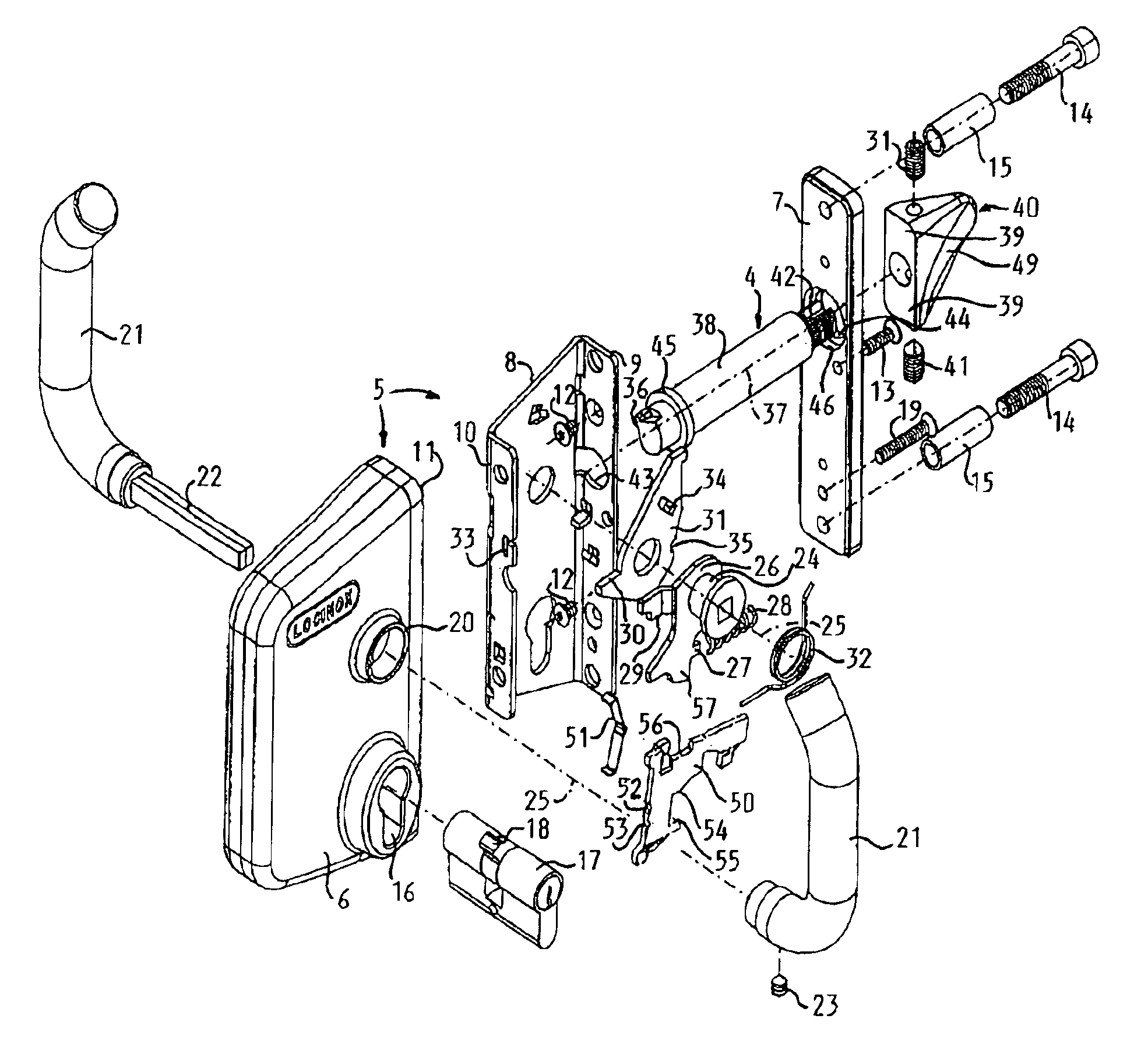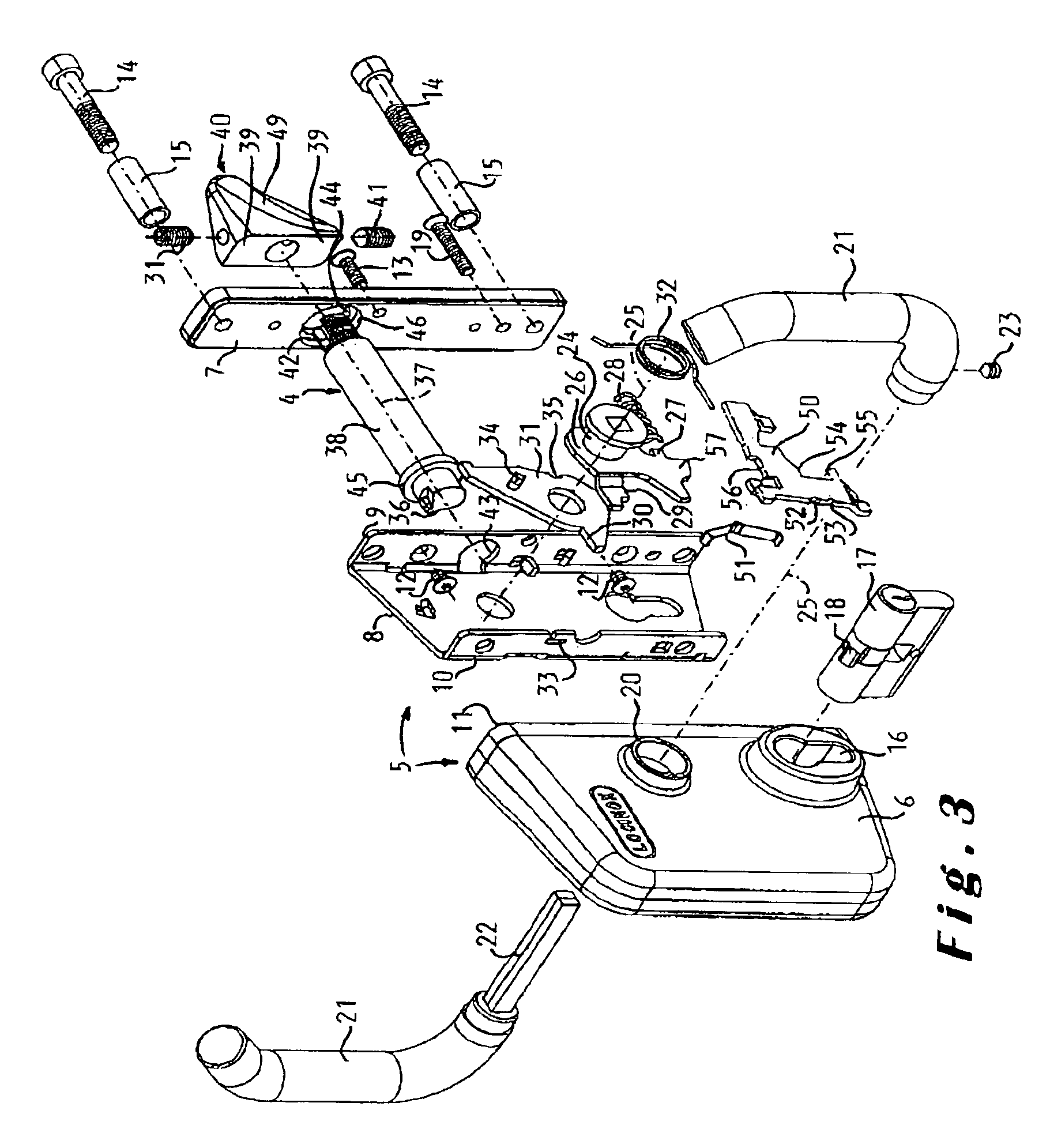Lock for a sliding door or gate
a technology for sliding doors and gates, applied in the direction of keyhole guards, mechanical control devices, restricting/preventing/returning movement of parts, etc., can solve the problems of large rectangular holes to be made for bolts in the profile, damage to spring steel bands, and large forces in bolts
- Summary
- Abstract
- Description
- Claims
- Application Information
AI Technical Summary
Benefits of technology
Problems solved by technology
Method used
Image
Examples
Embodiment Construction
[0033]The lock 1 shown in the drawings is a lock provided to be mounted against a profile 2, in particular a tubular profile, of a sliding door or gate. In the present specification, the term door is intended to embrace doors, gates and any other similar closure structure. The profile 2 is provided with a cylindrical hole 3 so that the latch bolt 4 of the lock 1 can project there through. This latch bolt 4 can be rotated by means of the handles from the locking position illustrated in FIG. 1 to the unlocking position illustrated in FIG. 2.
[0034]The illustrated lock 1 comprises a frame 5 composed of a cover box 6, a front cover plate 7 for closing the box 6 and a base plate 8 arranged within the closed box 6. The base plate 8 has on its front side an upstanding edge 9 and on its back side a further upstanding edge 10. The cover box 6 has such dimensions that the base plate 8 can be slid completely therein, more particularly through the substantially rectangular front opening 11 of th...
PUM
 Login to View More
Login to View More Abstract
Description
Claims
Application Information
 Login to View More
Login to View More - R&D
- Intellectual Property
- Life Sciences
- Materials
- Tech Scout
- Unparalleled Data Quality
- Higher Quality Content
- 60% Fewer Hallucinations
Browse by: Latest US Patents, China's latest patents, Technical Efficacy Thesaurus, Application Domain, Technology Topic, Popular Technical Reports.
© 2025 PatSnap. All rights reserved.Legal|Privacy policy|Modern Slavery Act Transparency Statement|Sitemap|About US| Contact US: help@patsnap.com



